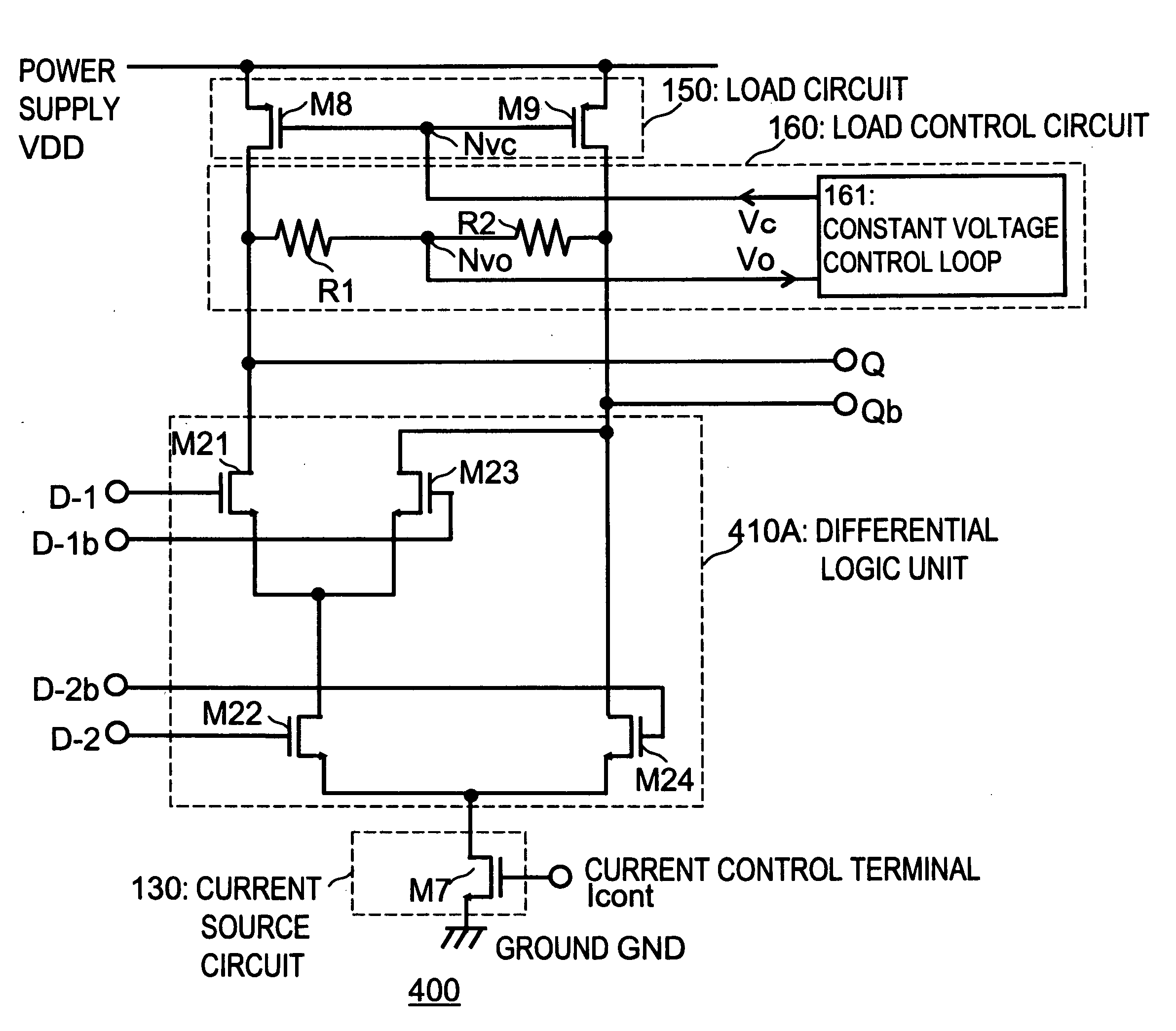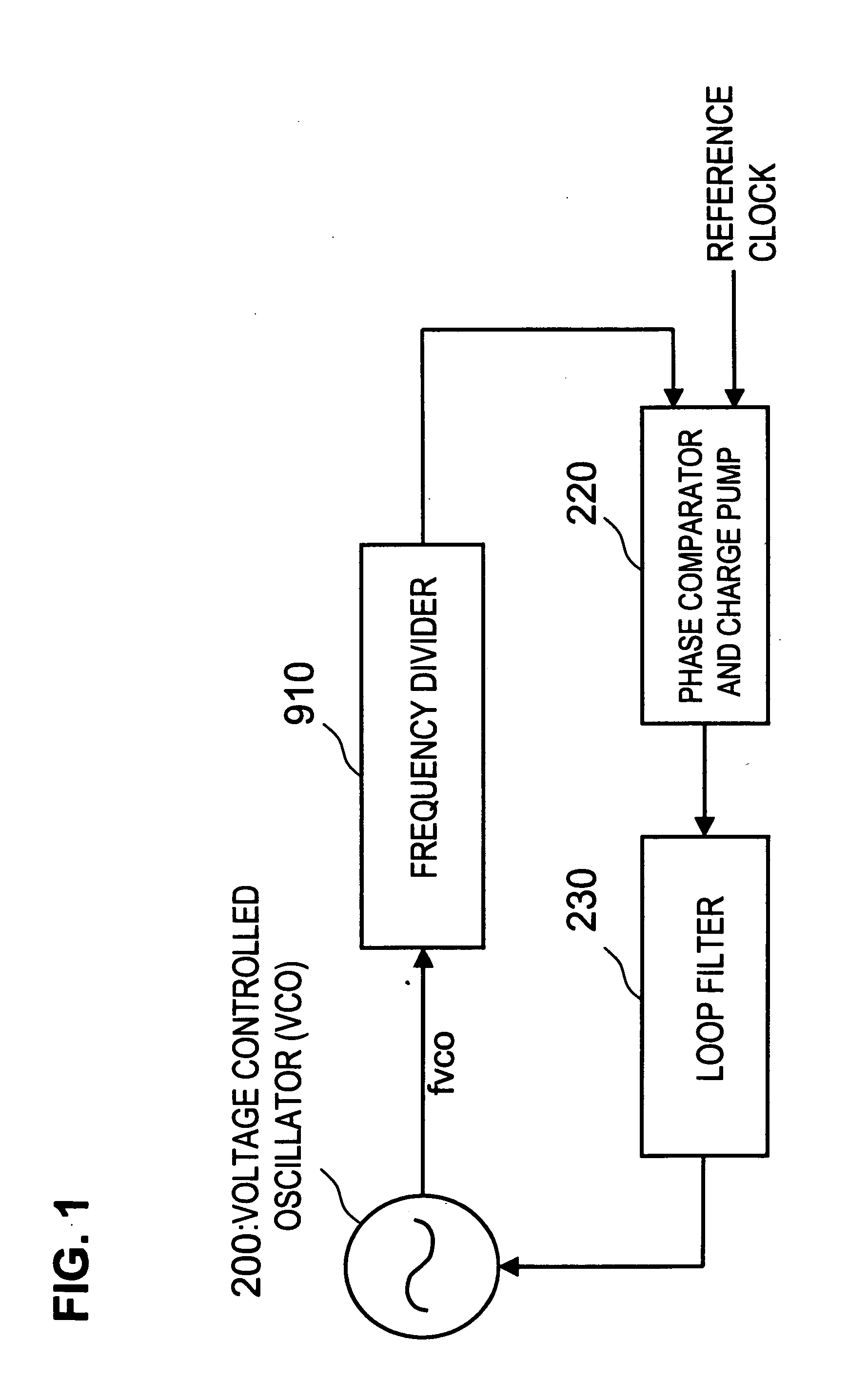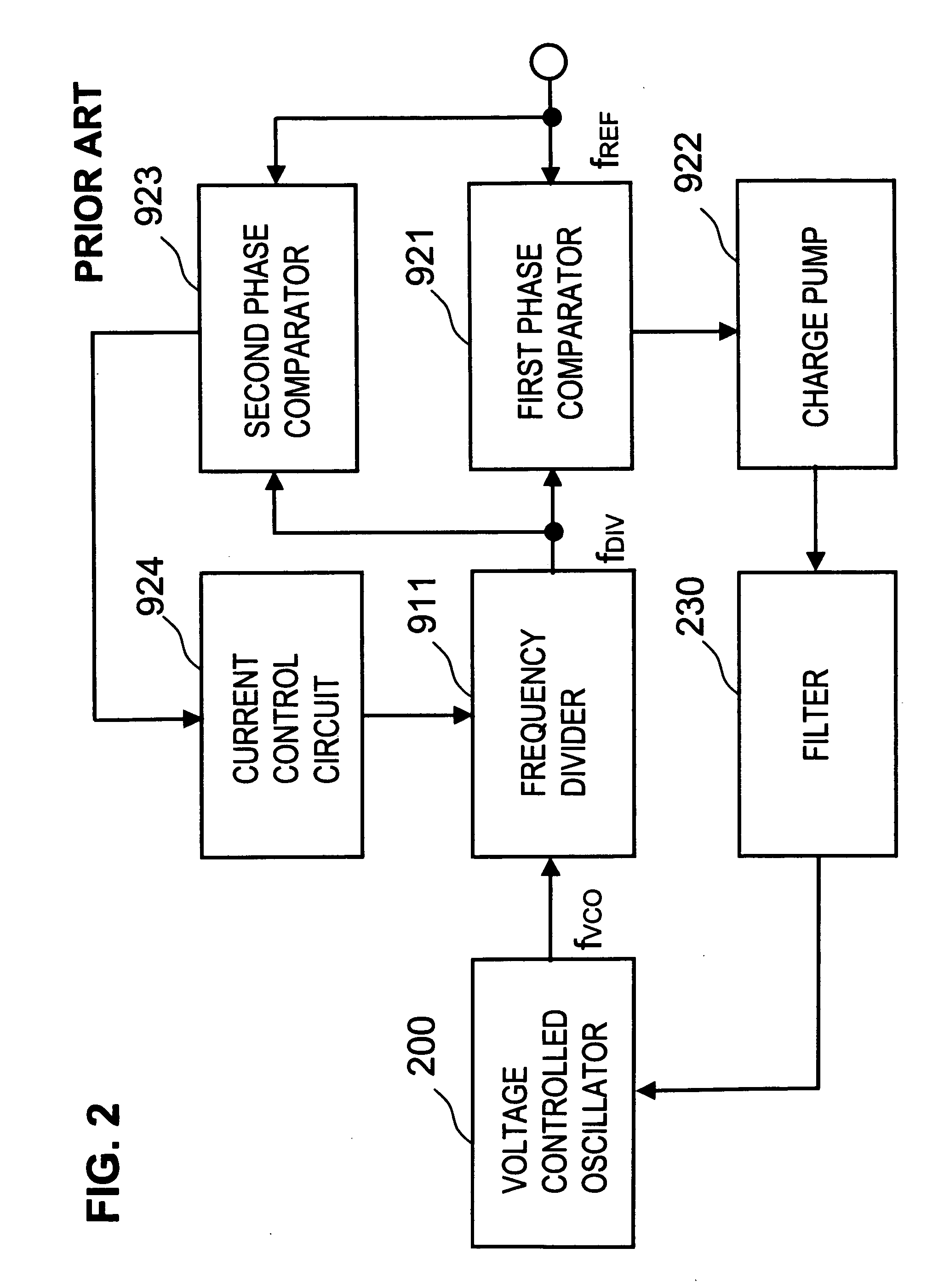Differential logic circuit, frequency divider, and frequency synthesizer
a logic circuit and frequency divider technology, applied in logic circuits, oscillators, pulse techniques, etc., can solve the problem that the current flow through the current source cannot be greatly varied
- Summary
- Abstract
- Description
- Claims
- Application Information
AI Technical Summary
Benefits of technology
Problems solved by technology
Method used
Image
Examples
first exemplary embodiment
FIG. 6 is a circuit block diagram of a differential latch circuit 100, which is a differential logic circuit according to a first example. The differential logic circuit includes a current source circuit 130 that supplies a power supply to the differential logic circuit, a differential logic unit 410 that implements a desired differential logic, a load circuit 150, and a load control circuit 160.
The current source circuit 130 includes an N-channel MOS transistor M7 with a gate thereof connected to a current control terminal and a source thereof connected to the ground GND, and supplies a power supply current (operating current) of the differential logic unit 410. It is arranged that the operating current output from a drain of the N-channel MOS transistor M7 can be controlled by a voltage of a current control signal Icont received from the current control terminal.
A circuit that implements logic of the differential latch circuit 100 is provided at the differential logic unit 410. In...
second exemplary embodiment
The internal circuit configuration of the load control circuit (constant voltage control loop) in FIG. 7 described in the first example is a most preferable configuration example. The load control circuit is not limited to the configuration in FIG. 7 using the current output type differential amplifier circuit 170. The load control circuit may use a more common voltage output type differential amplifier circuit. FIG. 10 is a circuit block diagram of a load control circuit 160A in a second example. FIG. 10 describes a load circuit 150 as well, in addition to the load control circuit 160A in the second example. Referring to FIG. 10, a voltage output type differential amplifier circuit 170A is a voltage output type operational amplifier circuit in which a potential difference between a signal applied to a non-inverted signal input terminal thereof and a signal applied to an inverted signal input terminal thereof is infinitely amplified to be large and is then output from a voltage outp...
third exemplary embodiment
FIG. 11 is a circuit block diagram of a ½ frequency divider according to a third example. A ½ frequency divider 190 is formed of two differential latch circuits 100-1 and 100-2 in the first example. A load control circuit 160 is provided in common to the two differential latch circuits 100-1 and 100-2. Gates of active loads M8 and M9 in the differential latch circuit 100-1 and gates of active loads M18 and M19 in the differential latch circuit 100-2 are connected in common to a control voltage output terminal of the load control circuit 160, for supply of a control voltage Vc. Resistances R1 and R2 of the load control circuit 160 are connected to output terminals Q and Qb of the differential latch circuit 100-2.
A non-inverted clock signal Ck and an inverted clock signal Ckb supplied from differential clock signal input terminals Ck and Ckb are connected in common to switch circuits (M5 and M6, and M15 and M16) of the differential latch circuits 100-1 and 100-2. The clock signals con...
PUM
 Login to View More
Login to View More Abstract
Description
Claims
Application Information
 Login to View More
Login to View More - R&D
- Intellectual Property
- Life Sciences
- Materials
- Tech Scout
- Unparalleled Data Quality
- Higher Quality Content
- 60% Fewer Hallucinations
Browse by: Latest US Patents, China's latest patents, Technical Efficacy Thesaurus, Application Domain, Technology Topic, Popular Technical Reports.
© 2025 PatSnap. All rights reserved.Legal|Privacy policy|Modern Slavery Act Transparency Statement|Sitemap|About US| Contact US: help@patsnap.com



